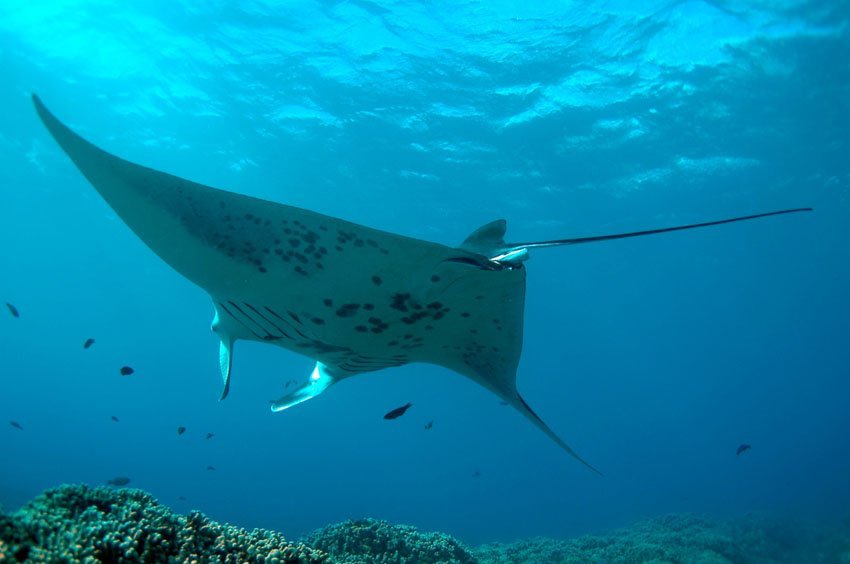Rays

Rays (Dasyatidae, Mobulidae, Myliobatidae) Overview
Even though they hardly look like sharks, rays are closely related to them. Rays' skeletons are composed of cartilage and they don't have swim bladders. They are carnivores and most of them are bottom dwellers, except for manta rays, eagle rays, devil rays and cownose rays.
They swim with their pectoral fins, slowly gliding through the endless ocean abyss. Their mouth is on the bottom of their bodies (except in manta rays), and their gill slits are under their pectoral fins. The Hawaiian name for rays is lupe (meaning “kite”) and hihimanu (meaning “magnificent”).
Frequently Asked Questions
Are rays related to sharks?
Yes. Rays are closely related to sharks. Both belong to the class Chondrichthyes, meaning they have skeletons made of cartilage instead of bone and lack swim bladders.
How do rays swim?
Rays swim by undulating or flapping their large pectoral fins, which makes them glide gracefully through the water. Manta rays, in particular, are known for their acrobatic swimming behavior.
Where can I see rays in Hawaii?
Rays can be seen throughout Hawaii. Manta ray night dives are popular on the Big Island near Kona, while spotted eagle rays and stingrays may be seen near reefs and sandy bottoms.
What do rays eat?
Rays are carnivores. Most species feed on crustaceans, mollusks, and small fish. Bottom-dwelling rays use their mouth to suction food from the sand, while manta rays filter plankton from the water.
What are rays called in Hawaiian?
In Hawaiian, rays are known as lupe (meaning “kite”) and hihimanu (meaning “magnificent”). These names reflect the rays' graceful and majestic movements through the sea.








